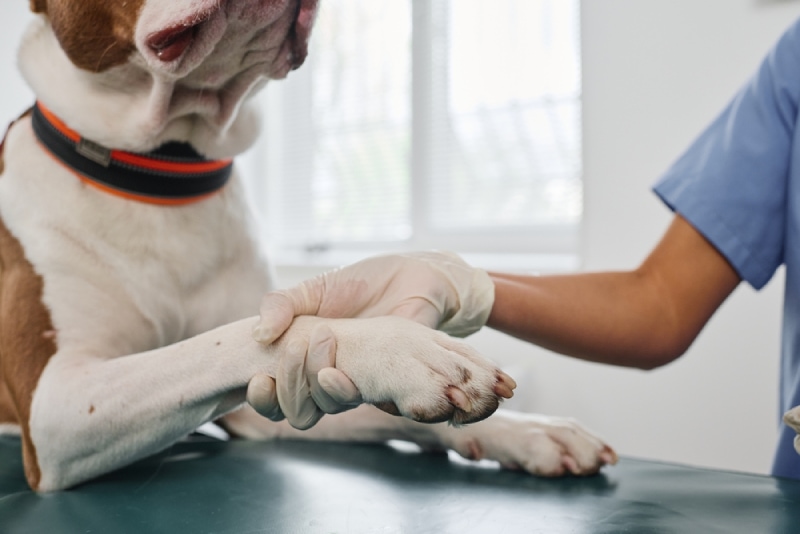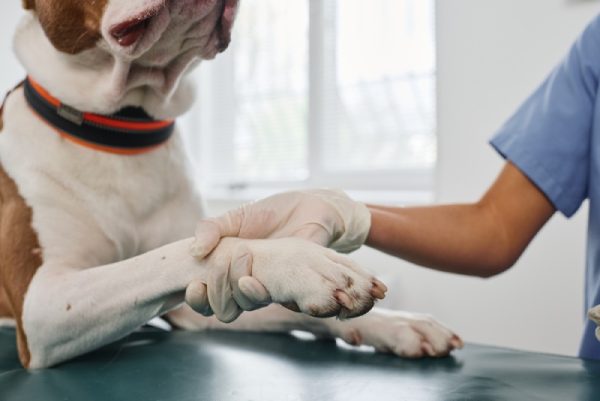Click to Skip Ahead
Dogs can develop tumors anywhere on their bodies, including on their paws. These can occur on or near the digits, the back of the paw, or around the pad of the paw. Although many tumors are benign, which means they are non-cancerous growths, some tumors can be cancerous.
Although benign and malignant tumors do behave differently, fast action increases the chances of survival if the tumor does turn out to be cancerous, so the only safe way to determine whether one is cancerous or not is to visit a vet. They may be able to test the tumor by collecting samples through a needle or they may need to perform a biopsy to remove part of the tumor.
Treatment options can include the removal of the tumor as well as radiation therapy, immunotherapy, and chemotherapy. The best treatment, or combination of treatments depends on how developed the cancer is, whether it has spread, and how aggressive you want the treatment to be.
Benign vs Malignant Tumors
Benign Tumors
Benign tumors are non-cancerous growths. They do not spread to any other parts of the body or nearby tissue. Some benign tumors need to be removed, especially if they are causing pain or discomfort, which is possible if the tumor is on the foot. However, in some cases, the growth does not need to be removed.
Malignant Tumors
Malignant tumors grow and continue to grow. They also tend to spread to nearby tissue, and they can spread to other areas of the body. If the tumor is caught early, it will typically be removed, and the dog given additional therapies to help reduce the risk of it returning.
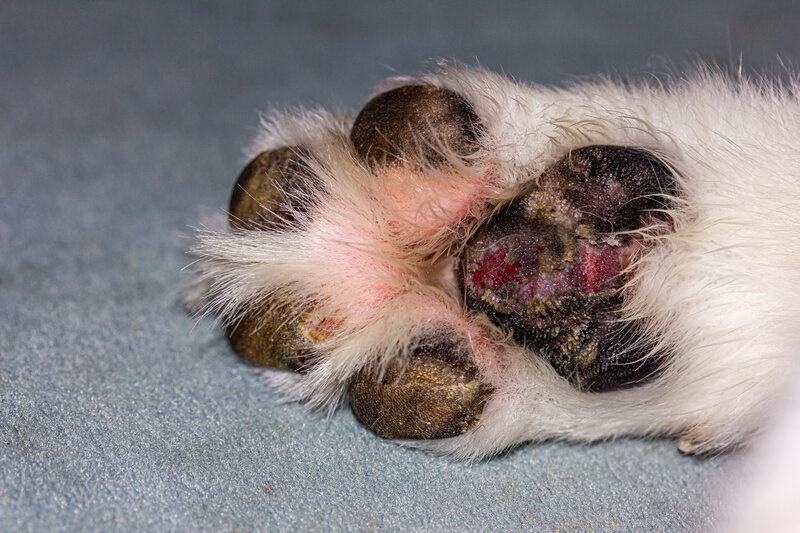
The 6 Types of Tumors on Dog Paws
Dogs can get tumors anywhere on their body, including on and around their paws. Different types of tumors might present and include the following.
1. Histiocytoma
Histiocytomas are usually benign and are referred to as button tumors because of their size and shape. Most common in dogs under 3, they can regress on their own after several months, but your vet may recommend removal and you should have the tumor checked to ensure that it is benign.
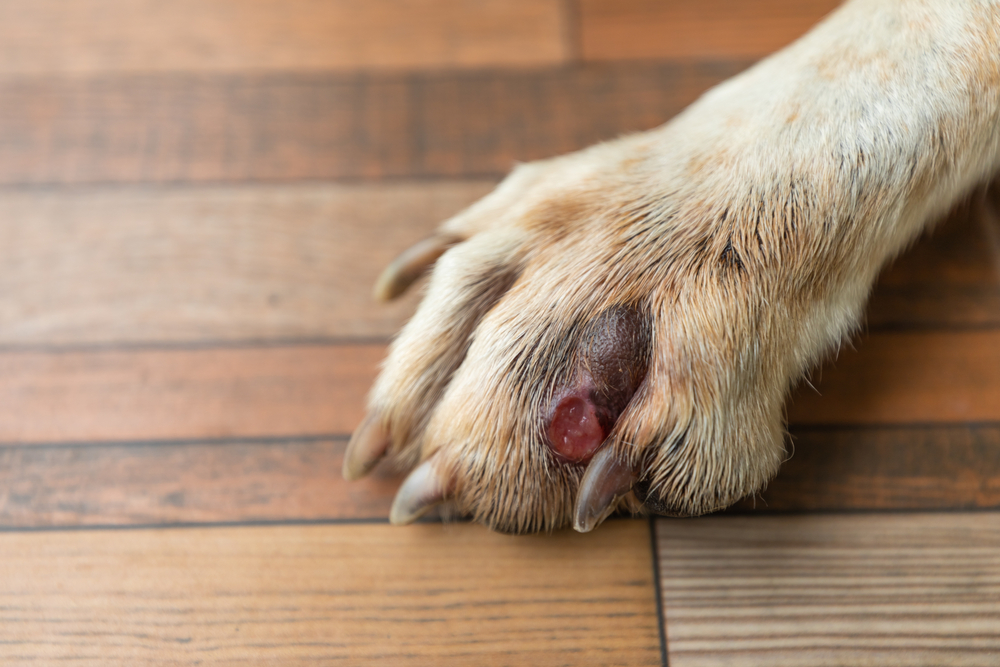
2. Melanoma
Melanomas most commonly occur in or near the mouth, as well as on dogs’ feet. These are types of skin cancer that can spread to other parts of the body, and they grow and spread quickly. Melanomas can be difficult to spot because they can be flat and they may also be non-pigmented, which means they will be difficult to spot under the fur.
3. Squamous Cell Carcinoma
Squamous cell carcinoma is another form of skin cancer. Specifically, it forms in the epidermal cells. The carcinoma can look like a crusted area of skin, or it may appear red, inflamed, and standing away from the body.
4. Fibrosarcoma
Fibrosarcoma are caused when cells in connective tissue grow uncontrollably. There may be a visible lump under the skin, and fibrosarcoma can cause lameness and discomfort in a dog. They can be locally invasive, and difficult to remove.
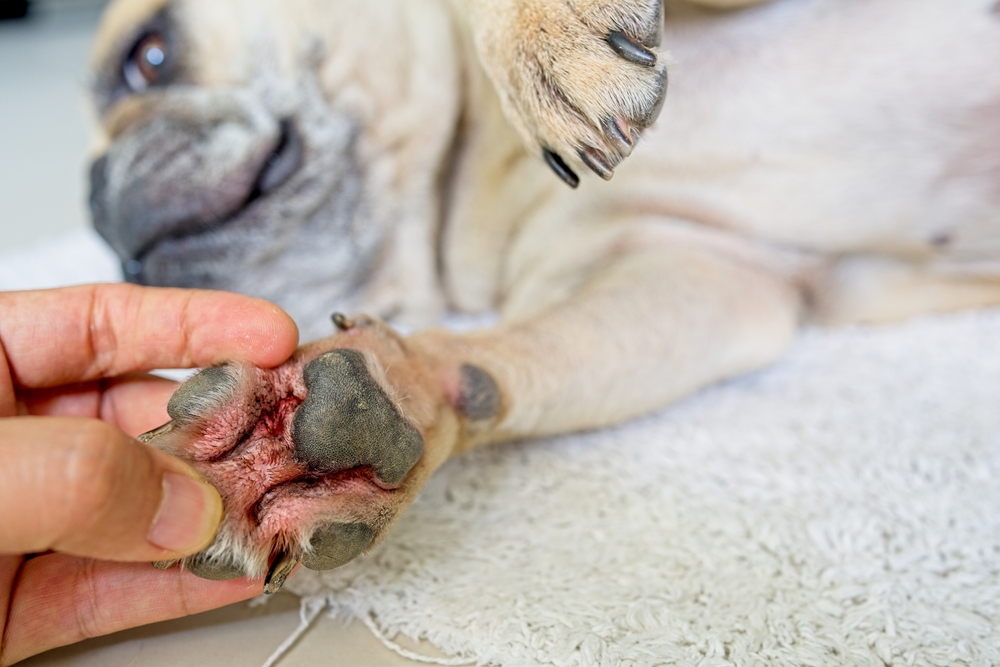
5. Mast Cell Tumor
Mast cell tumors are the most common skin cancer in dogs and one of the most common types of malignant tumors.1 This type of tumor affects the cells, in the skin, that fight allergic reactions. These tumors can develop slowly or quickly and generally appear as a raised lump on or just under the skin.
6. Plasma Cell Tumor
Plasma cell tumors occur in the bones or soft tissue, and they can occur anywhere in the body, including in or near the paws. They usually present as small growths and, when they occur on the paw, they need removing and the dog may require radiation therapy or even chemotherapy.
Identification
It is impossible to tell whether a tumor is benign or malignant just by looking at it. Similarly, your vet will not be able to determine this through a physical examination alone. They will need to use other methods to determine the type of tumor.
Fine Needle Aspirate
In some cases, it may be possible to identify the type of tumor by taking and testing some of the tissue from the tumor. The procedure is quick and easy, so is the usual first choice for identification. Once a sample has been collected, it is investigated under a microscope. If the tumor is determined to be cancerous, further testing is usually required, to gather more information. Because the vet is only able to get a small tissue sample, it may not be enough to fully identify the tumor.
Biopsy
Where a fine needle aspirate is unable to determine the type of cancer, or if a tumor is cancerous or not, a biopsy will usually be required. During a biopsy, either part of or the whole tumor is removed under general anesthesia. The tumor can be more thoroughly tested, and the vet will gain clearer insight into the type of tumor it is.

The 4 Treatment Options
If a tumor is determined to be cancerous, your vet will discuss treatment options with you. The best option will depend on the type, stage, and development of the cancer as well as your dog’s age and general condition.
The most common forms of treatment start with removal, which is generally combined with immunotherapy, radiation therapy, or chemotherapy.
1. Removal
The tumor and any other tumors or cancerous growths are surgically removed. The dog will usually be given a general anesthetic and removal will usually be combined with some other form of therapy to reduce the chance of the cancer reemerging. Chest x-rays may also be needed to look for a common site of tumor spread. Removal or amputation of an affected toe may also be needed.
2. Immunotherapy
Immunotherapy is generally used on advanced cancers and returning cancers. One of several methods is used to teach the immune system how to fight cancer. This may be used alone or in conjunction with radiation or chemotherapy.
3. Radiation Therapy
Radiation therapy is commonly referred to as radiotherapy and it uses radiation to fight cancer cells. It is usually used during the early stages of cancer. It can shrink tumors and kill the cancerous cells, preventing them from growing and spreading.
4. Chemotherapy
Rather than using radiation, chemotherapy uses strong drugs to kill cancerous cells. There are many different drugs used in chemotherapy and this treatment is commonly used in late-stage and highly advanced cancers.
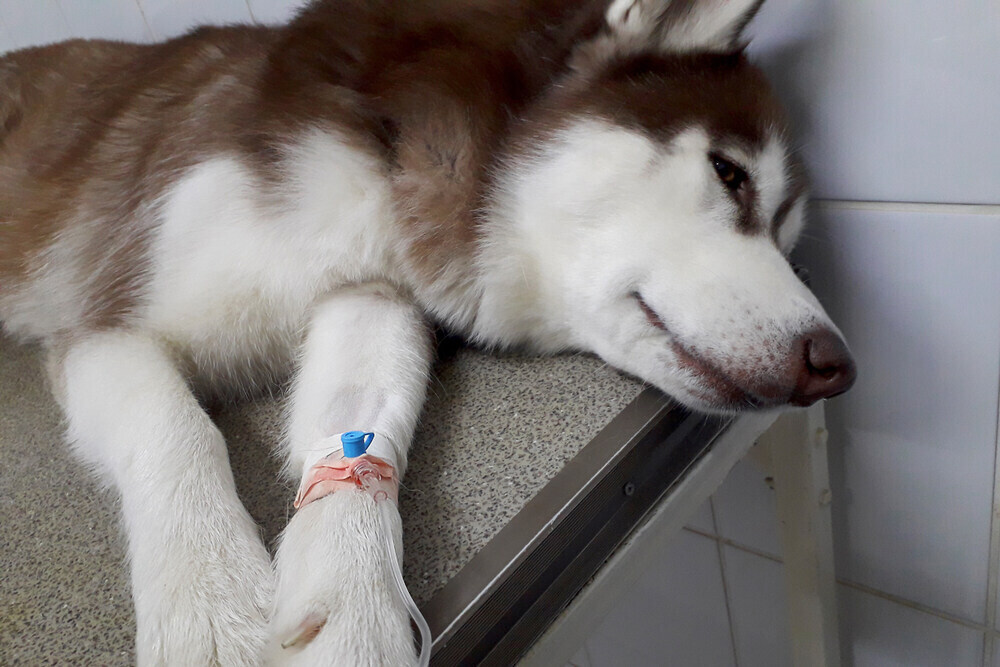
Frequently Asked Questions (FAQ)
How Long Can a Dog Live with Cancer?
How long a dog can live with cancer depends on the type of cancer, as well as the stage of development it has reached. It can vary from a couple of months to 18 months or more. If treatment is successful, there is no reason that a dog won’t go on to live a healthy, long life. It will also depend on the type of cancer. But early diagnosis offers the best chance of successful treatment so you must take your dog to the vet if you suspect it might have cancer.
Is Cancer on a Dog’s Paw Treatable?
Whether the cancer is treatable depends on several factors. The type of cancer and how far developed it is not only determines the best form of treatment but also the likelihood of success. Your dog’s age and general condition also play a part. In some cases, and especially where aggressive treatment would be required, it might not be in a dog’s best interest to undergo treatment. Your vet will discuss this with you.
Are Tumors Painful for Dogs?
Some tumors can be painful, depending on their location. On the paw, the tumor is likely to get knocked and rubbed, which can cause considerable discomfort and potentially some pain. If this is the case, even if the lump is benign, your vet will likely recommend its removal.
Different types of cancer can have different effects on dogs. Bone cancer will likely cause limping or lameness if it is on or near the paw. Your dog may be stiff when waking and may find walking difficult. Skin cancers can be uncomfortable and may cause itching and irritation. However, in some cases, the cancer may not affect your dog’s actions or behavior at all during the early stages of the illness.

Conclusion
A tumor on a dog’s paw does not necessarily mean cancer. The tumor could be benign, which means it won’t spread either locally around the area or more generally to other sites. Malignant tumors can spread, but it is impossible to tell by visual inspection or physical examination whether a tumor is cancerous or benign.
If your dog has a tumor on or near its paw, make an appointment with the vet and have it examined as soon as possible. Early identification improves the chances of successful treatment and increases the options available to you and your pup.
Featured Image Credit: Pressmaster, Shutterstock

